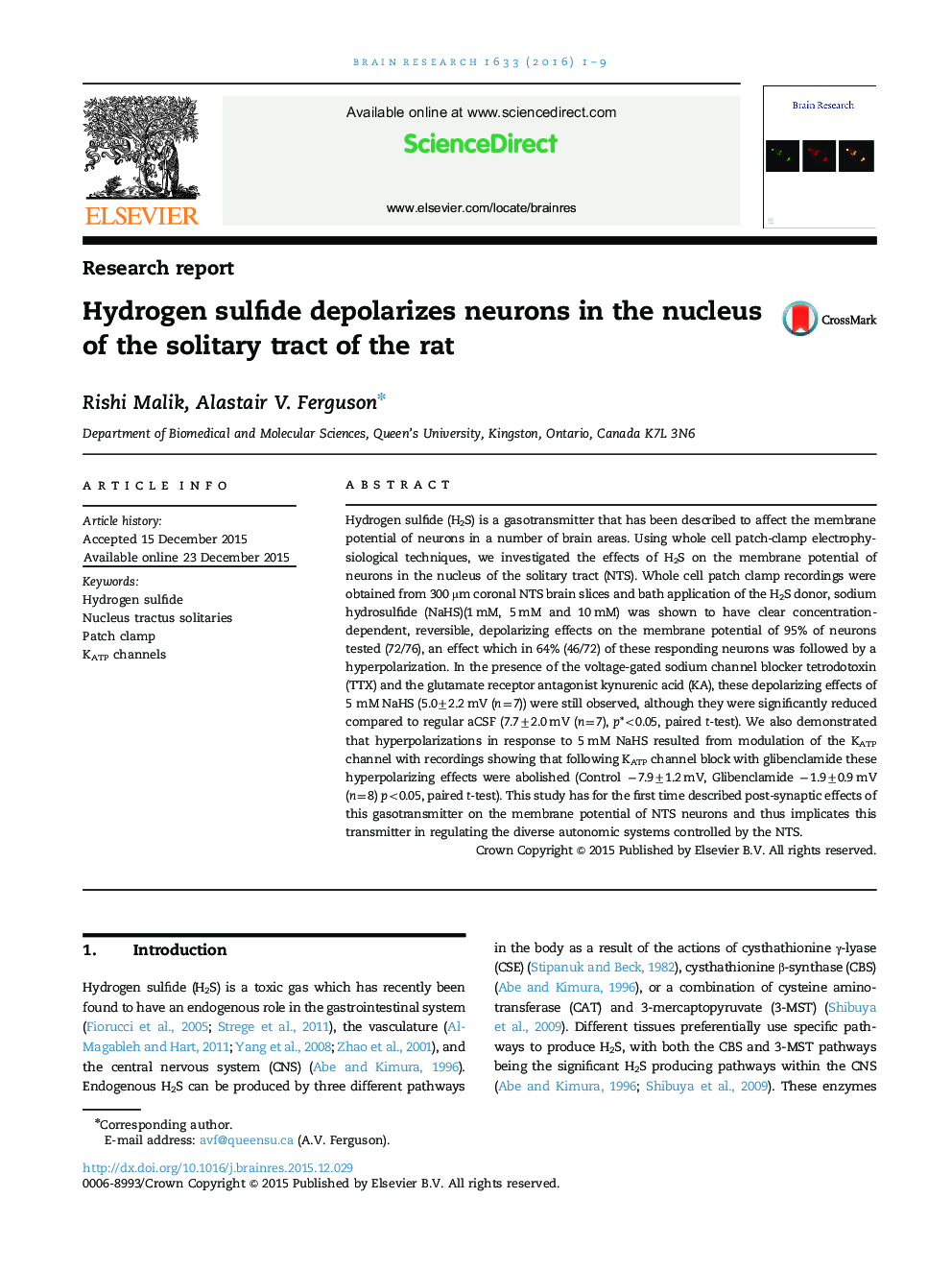| کد مقاله | کد نشریه | سال انتشار | مقاله انگلیسی | نسخه تمام متن |
|---|---|---|---|---|
| 4323709 | 1613807 | 2016 | 9 صفحه PDF | دانلود رایگان |
• We report of direct H2S effects on membrane potential of NTS neurons.
• H2S has reversible, depolarizing effects on 95% of NTS neurons tested (72/76).
• These effects were postsynaptic (observed in tetrodotoxin and kynurenic acid).
• Depolarization was followed by a hyperpolarization in 64% of neurons.
• Hyperpolarizations were the result of the modulation of KATP channels.
Hydrogen sulfide (H2S) is a gasotransmitter that has been described to affect the membrane potential of neurons in a number of brain areas. Using whole cell patch-clamp electrophysiological techniques, we investigated the effects of H2S on the membrane potential of neurons in the nucleus of the solitary tract (NTS). Whole cell patch clamp recordings were obtained from 300 µm coronal NTS brain slices and bath application of the H2S donor, sodium hydrosulfide (NaHS)(1 mM, 5 mM and 10 mM) was shown to have clear concentration-dependent, reversible, depolarizing effects on the membrane potential of 95% of neurons tested (72/76), an effect which in 64% (46/72) of these responding neurons was followed by a hyperpolarization. In the presence of the voltage-gated sodium channel blocker tetrodotoxin (TTX) and the glutamate receptor antagonist kynurenic acid (KA), these depolarizing effects of 5 mM NaHS (5.0±2.2 mV (n=7)) were still observed, although they were significantly reduced compared to regular aCSF (7.7±2.0 mV (n=7), p*<0.05, paired t-test). We also demonstrated that hyperpolarizations in response to 5 mM NaHS resulted from modulation of the KATP channel with recordings showing that following KATP channel block with glibenclamide these hyperpolarizing effects were abolished (Control −7.9±1.2 mV, Glibenclamide −1.9±0.9 mV (n=8) p<0.05, paired t-test). This study has for the first time described post-synaptic effects of this gasotransmitter on the membrane potential of NTS neurons and thus implicates this transmitter in regulating the diverse autonomic systems controlled by the NTS.
Journal: Brain Research - Volume 1633, 15 February 2016, Pages 1–9
